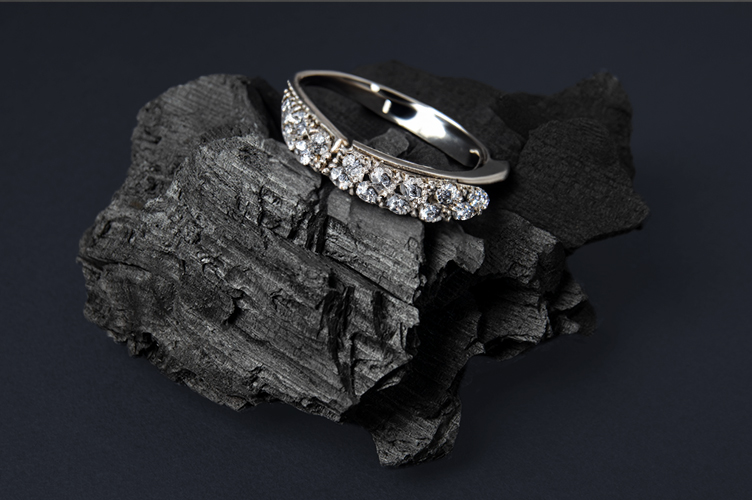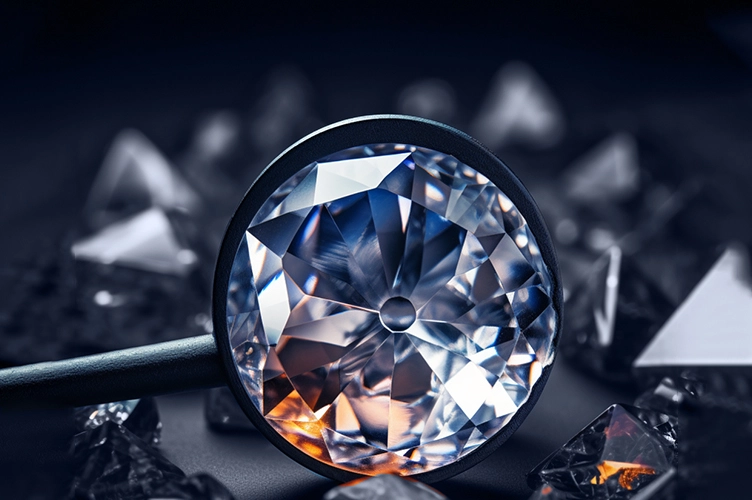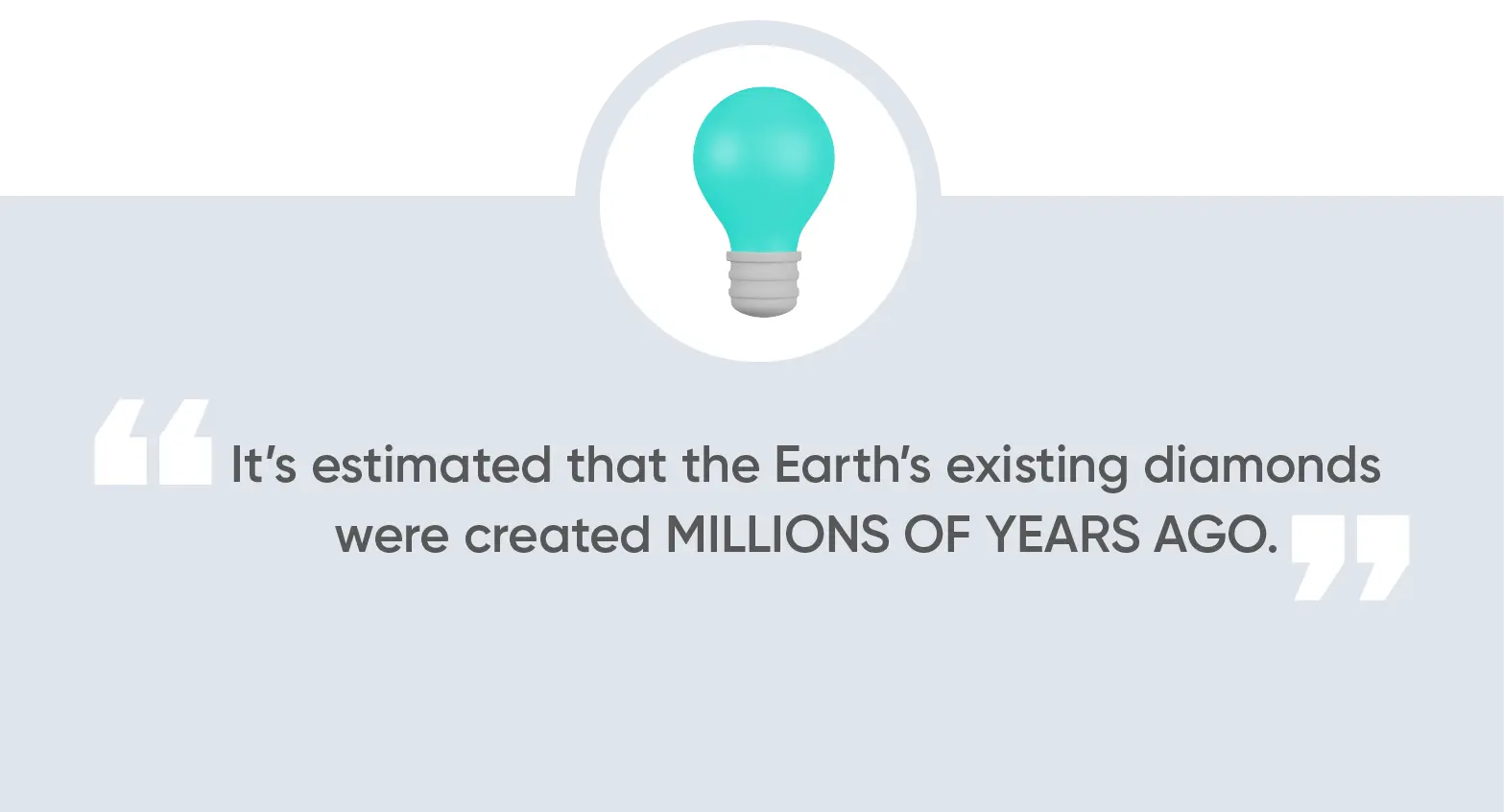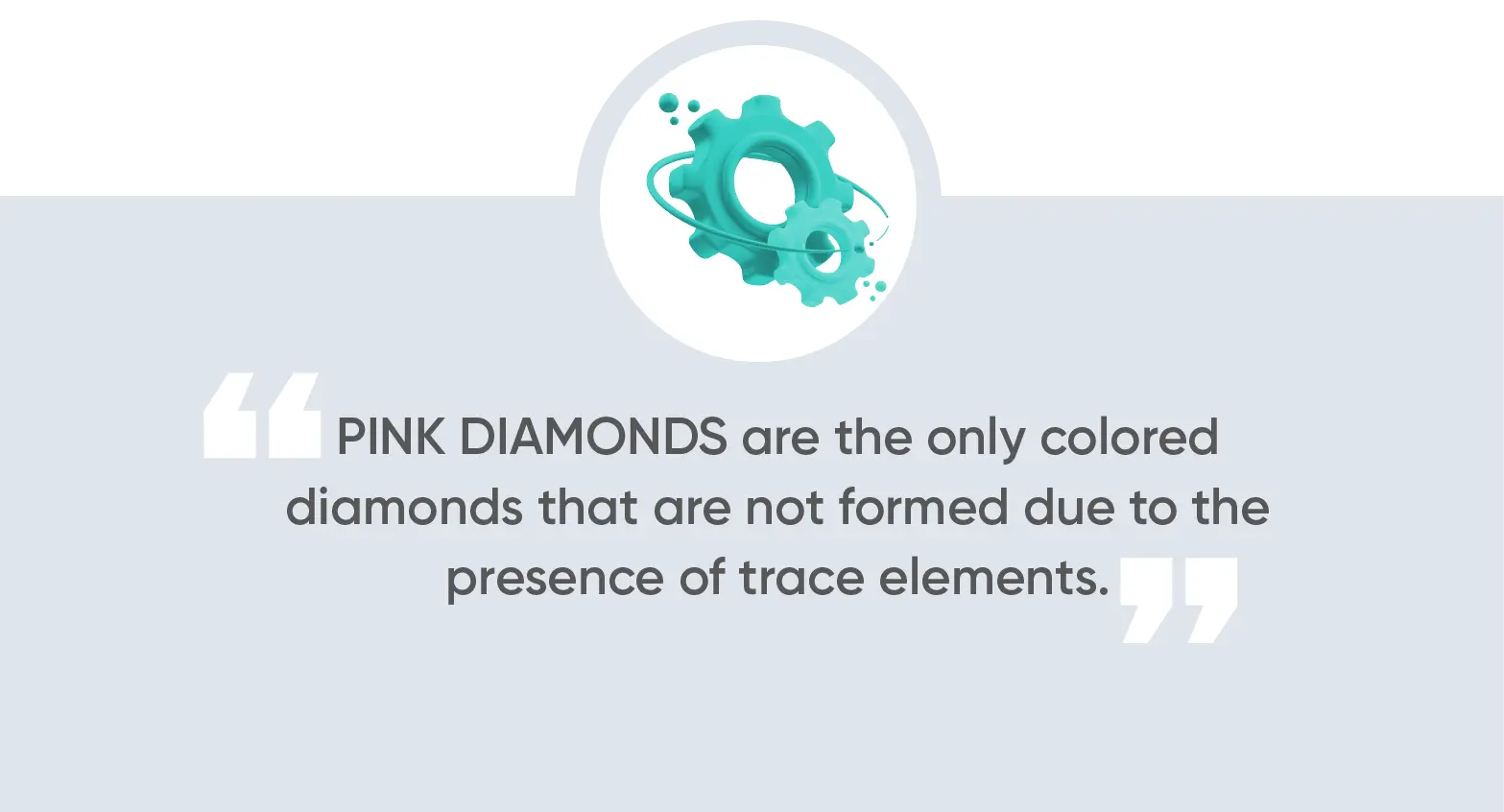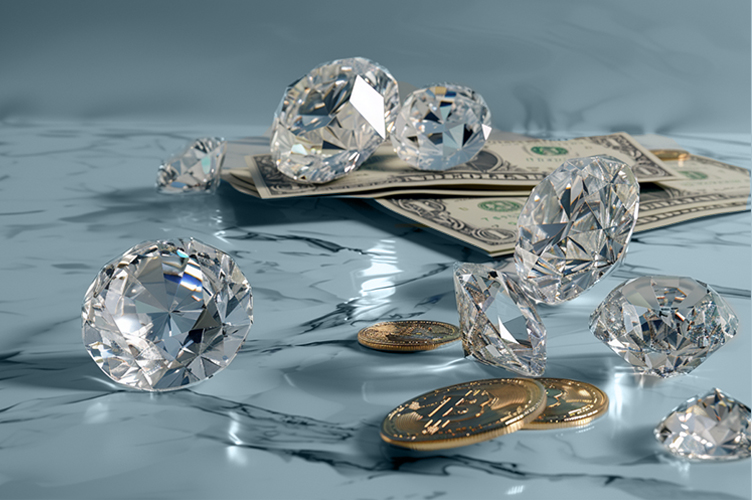How are Diamonds Formed? How that Rock Gets from the Ground to Your Finger (It’s a Million-Year Process)
We’ve all probably heard the saying, “A diamond is a chunk of coal that did well under pressure,” and similar pieces of advice intended to make people think that something undesirable, with lots of pressure, can turn into something beautiful. However, don’t let this prevalent saying influence how you believe diamonds form.
The diamond formation is much more complex than just sticking a lump of coal under the ground, waiting a few million years, and then digging up a glittering gemstone.
What You Will Learn
How are Diamonds Formed Naturally?
If you’re wondering how natural diamonds form, here’s what you need to know.
Carbon is the only material needed for natural diamonds to form. Mined diamonds are entirely carbon. The carbon evolves into a diamond when the underground carbon mixes with high heat and pressure.
However, while you probably think diamond formation requires millions of years for all that pressure and heat to turn one element into something else, that’s not always the case. Sometimes, the heat and pressure are enough to create a diamond in as little as a few days.
That said, don’t expect to walk outside and find a diamond where there wasn’t one yesterday—an estimate of Earth’s existing diamonds date to millions of years ago.
Colored Diamond Formation
Sometimes, though, this process gets mixed up. Not only do carbon atoms experience high heat and pressure, but they also mingle with other elements. These extra elements result in colored diamonds.
Trace elements that can lead to colored diamonds include
- Nitrogen
- Sulfur
- Boron
Pink diamonds are the only colored diamonds that form without additional trace elements. Instead, pink diamonds result from excess pressure changing the diamond structure and molecular makeup, resulting in a pink hue.
Suggested Read: How Much is a Pink Diamond Worth?| BriteCo Jewelry Insurance
Whatever the color of the diamond, eventually, those diamonds have to make their way toward the surface of the Earth, as mining can’t go deep enough to retrieve these diamonds on its own. Thanks to ancient volcanoes for pushing the diamonds toward the surface, where they’re now accessible to humans.
So Why Does Everyone Think Diamonds Come from Coal?
The above explains exactly why people think diamonds formed from coal. While the famous saying certainly helps to spread the idea, this belief is to blame on the similarities between the two substances.
While on the outside, the two are vastly different but experience similar processes: extreme heat and pressure
Discovering Diamond Deposits
Today, diamond mining makes quick work of the Earth’s millions of years of hard work (and this rapid discovery of all the Earth’s diamonds is part of the reason why diamonds are more expensive than some other precious stones — they’re growing exceedingly rare).
Diamond mines set up shop around diamond deposits, typically located in historic volcanic pipes, as ancient volcanoes provided that perfect mixture of heat, pressure, and movement necessary for diamond formation and depositing. Kimberlite pipes and lamproite pipes are two pipe “types” that may contain diamonds.
Discoverers first began mining natural diamonds in India. However, in the 1800s, diamonds were quickly discovered in nearly every corner of the globe, prompting the construction of large diamond mines in Africa, Russia, Australia, and South America. At the same time, North America has smaller diamond reserves.
How is Diamond Formed in the Lab?
But if that’s how diamonds form and are discovered beneath the Earth’s surface, how are diamonds formed in a lab setting? Synthetic diamonds are formed in a very similar manner.
In the 1950s, researchers began wondering how to form diamonds and replicating the high heat and pressure necessary to create diamonds in a lab setting. At first, these resulting diamonds weren’t high quality enough for use in jewelry. Still, they were perfectly suitable for use in manufacturing settings (since a diamond is tough, has more functionality past fashion, and is found in unexpected materials such as drill bits).
So, how exactly do you replicate millions of years of the Earth’s work in a lab?
The first method in use (and is still in use today, though it’s not preferable) was the High Pressure High Temperature (or HPHT) method that, as mentioned, recreated the Earth’s high-temperature, high-pressure environment that turned carbon into diamond, millions of years ago.
A more modern method that is superior today is the CVD process or Chemical Vapor Deposition.
In this method, lab diamonds form when placing a diamond seed in a diamond growth chamber. These diamond seeds (or tiny diamonds) fuse with a combination of high-heat gasses. With this mixture of gasses and high heat, artificial diamonds grow slowly.
After about a month or so, rough diamonds are removed from the chamber and then can be cut and polished for use in diamond jewelry. The resulting diamonds have all the diamond quality that shoppers expect from a mined diamond.
How Diamonds are Formed FAQs
Still, have more questions? Here are all the need-to-know points from above and a few more facts to keep handy when shopping for your next diamond.
How does the Earth form diamonds?
When carbon atoms beneath the Earth’s surface crystalize due to high heat and high pressure, they form into a mined diamond.
Is creating diamonds in a lab easy?
Creating diamonds in a lab requires recreating similar conditions that formed diamonds beneath the Earth millions of years ago but in a manufactured setting. While it’s not easy, it’s much faster than Mother Nature’s process and is more affordable and ethical than mining diamonds.
Where are diamonds found?
Kimberlite pipes are a great source to find diamonds within the Earth’s surface. These pipes underwent exposure to ancient volcanoes’ heat, pressure, and power. As the volcanoes moved the earth around them, diamond mining became possible for humans because they were closer.
It Took a Lot to Form Your Diamond — Make Sure It’s Protected!
Suppose you weren’t sure how diamonds formed. In that case, hopefully, you now have a clearer idea of how the process works — and hopefully, you also now realize just how much ancient history and natural phenomena went into creating that sparkly diamond on your finger.
Protect your diamond from all of life’s unexpected incidences with diamond insurance.
BriteCo offers affordable, easy jewelry insurance, and you can get your personalized quote in just a few minutes.
Also Check:

